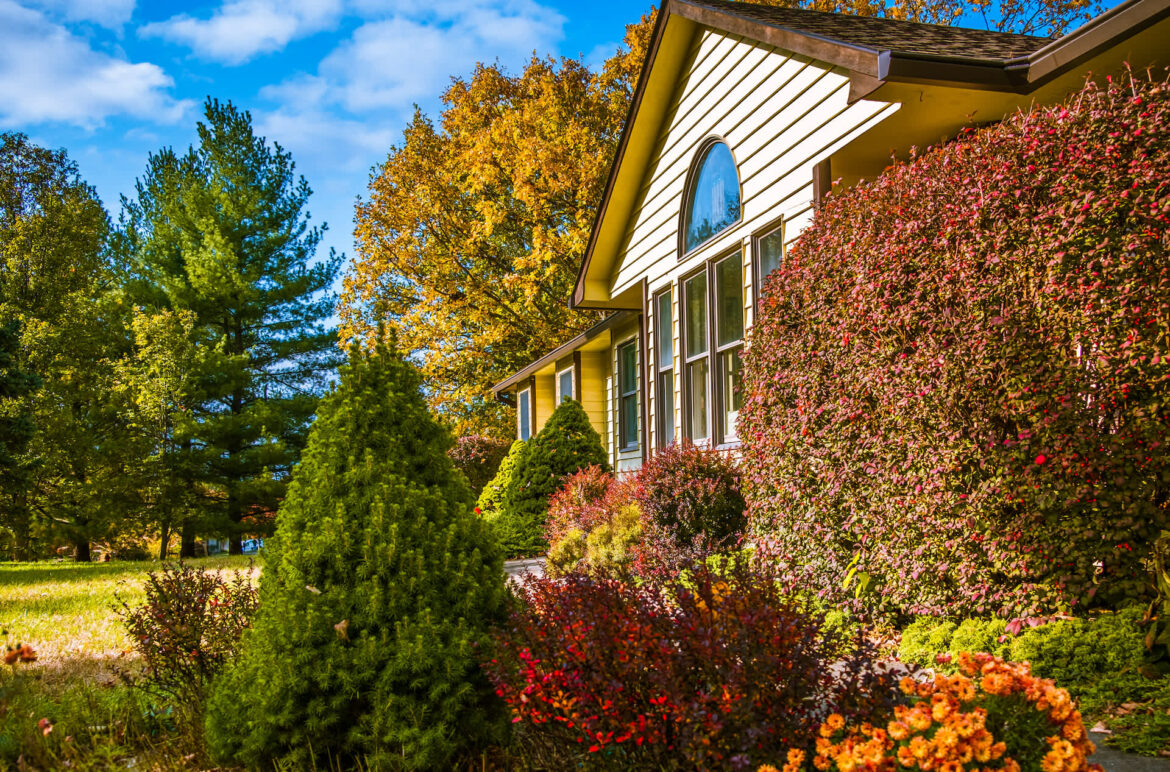A gardening expert is encouraging homeowners to rethink one of fall’s flashiest shrubs.
In a TikTok post, Powers Plants (@powers_plants) stands beside a burning bush to explain why the vibrant plant should not be the autumn favorite many view it as.
“No. 1, highly invasive plant, especially in the Northeast and the Midwest,” she says. “It’s destroying native ecosystems. No. 2, from a design perspective, I get no spring flowers, it’s a plain green shrub, and I get a couple weeks of bright red in the fall.”
The creator mentions that gardeners may not realize how invasive it is. While you might have one under control in your yard, birds eat its berries and excrete the seeds in natural areas, where the bushes can grow uncontrollably.
The expert then shares a number of alternatives that offer both spring flowers and beautiful red foliage — without being harmful to local ecosystems.
@powers_plants I know how much people really love their burning bush for that bright red fall color. But sadly, that plant is highly invasive, especially in the Northeast and the Midwest. And don’t worry, I have some fantastic native options that have the same beautiful color in fall, but there’s also flowers, which you don’t get with a burning bush! Those native flowers are going to feed spring pollinators, and the seeds and berries are going to feed birds and other wildlife. So you’ll be helping the ecosystem and gaining design value by removing your burning bush and replacing it with one of these natives. You’ll have to check your area and see if these plants are native near you and if you are looking at a native viburnum like the ones I mentioned in this video, check and see if your county is having an issue with viburnum leaf beetle, which is an invasive pest that will kill your shrub. Here are some replacement options: – Nannyberry viburnum – American cranberry viburnum – Some varieties of Arrowood viburnum – winged sumac – smooth sumac – native honeysuckle – sweetspire like Little Henry – for very large areas with a lot of moisture look at button bush – black chokeberry I am a Garden Coach located in the northwest suburbs of Chicago. I do on-site sessions right in your garden if you live 40 miles from Arlington Heights, Illinois. I also do virtual sessions for people that don’t live close to me. I have helped gardeners all over the United States and Canada, with all experience levels, improve their knowledge and skills to achieve the garden of their dreams and do it with their own two hands. From designing your beds to plant selection and pruning, flowers to vegetables, book a session with me on my website at PowersPlants.com. Photo Credits: State of Indiana Cooperatives Invasive Management #Garden #gardening #gardentok #planttok ♬ original sound – Powers_Plants
Known for its fiery foliage in autumn, burning bush (Euonymus alatus) is a popular landscaping choice. But it’s also an invasive species. Once established, it spreads aggressively, crowding out native vegetation and altering local ecosystems.
The creator recommends replacements such as nannyberry or American cranberry viburnum, native honeysuckle, winged or smooth sumac, and sweetspire. These native shrubs provide food and habitat for wildlife throughout the year while maintaining rich seasonal color. “So you’ll be helping the ecosystem and gaining design value by removing your burning bush and replacing it with one of these natives,” she says.
By swapping out invasive ornamentals for native plants, gardeners can boost biodiversity in their gardens. Burning bush will outcompete other plants, meaning your time and money will go to waste. Plus, native plants require fewer resources, which will save you money on water bills and other expenses.
On the environmental side, rewilding your yard with native plants or ground cover such as clover improves soil health and reduces the need for fertilizer and pesticides, which pollute nearby waterways. These species also help pollinators, which are essential for our food supply. Even partially upgrading your yard can offer big benefits.
Users praised the post for blending ecological awareness with practical design tips.
TCD Picks » Upway Spotlight
💡Upway makes it easy to find discounts of up to 60% on premium e-bike brands
“I just learned this is invasive earlier this year… thx for spreading the word,” one person wrote.
Someone else added: “I’m loving your content so much! Being able to identify invasive species is the kind of education folks need.”
“We replaced ours with rose of sharon. The hummingbirds love them,” another said.
A fourth commenter shared, “I removed ours… so glad I did!!”
Join our free newsletter for easy tips to save more and waste less, and don’t miss this cool list of easy ways to help yourself while helping the planet.


Comments are closed.